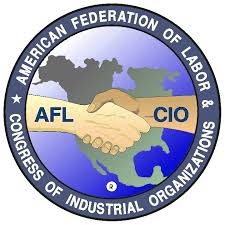Career Ladders &
Union Leadership
The Skilled Trades are Careers, not Jobs
FOREMAN
A foreman typically occupies the first supervisory tier, ranking above workers but below managers. Foremen determine the priorities for work to be done, sometimes based on their own initiative and authority, but more often based on needs communicated by general foremen, supervisors, or other upper management. They must determine whether they have the number of apprentices and journeylevel workers possessing the required skills for the job, verify that the needed items are available and direct journeylevel workers on which tasks are to be completed first. If problems arise, the foreman may alter the schedule to minimize down time or assign workers to another section if necessary.
GENERAL FOREMAN
The roles and responsibilities of a general foreman include medium-tier organizational and operational control along with general management of the projects for their particular trade. A person holding the position will need to have an overall understanding of different construction techniques and disciplines for their trade as well as a strong logistical and procedural knowledge. In the role of a general foreman, a person is deemed to have experience and understanding of all the required disciplines as the person will be in charge of organizing all site teams, inspecting the work, and controlling the overall job.
SUPERVISOR
The project supervisor completes projects for their particular trade by planning, organizing, and controlling projects; completing quality inspections; and supervising staff. The supervisor is typically involved with human resource matters such as orienting, assigning, scheduling, and disciplining employees and communicating job expectations. The supervisor meets operational standards by contributing construction information to strategic planning and review meetings; implementing production, productivity, quality, and customer-service standards; resolving problems; and identifying and implementing construction management improvements. The supervisor is responsible for meeting construction budgets by monitoring project expenditures.
PROJECT MANAGERS
Project managers control the time, cost and quality of construction projects for their particular trade. They plan and coordinate all aspects of the construction process, including working with engineers, architects and vendors. A single manager might oversee an entire construction project, or multiple managers might oversee specific aspects of a larger project.
PROJECT ESTIMATOR
When deciding which firm to hire for a construction project, one of the biggest factors is cost. Project Estimators calculate the price of time, labor and materials for a specific job, and then put together a bid. They generally specialize in a particular trade. The day-to-day work involves reading blueprints and competence in math. When making calculations, estimators analyze many inputs in order to determine how much time, money, and labor a project needs and how profitable it will be. These estimates have to take many factors into account, including allowances for wasted material, bad weather, shipping delays, and other factors that can increase costs and lower profitability. Estimators use computer software, including databases, to simulate building construction.
SAFETY OFFICER
Safety officers develop, implement and enforce policies that reduce the risk of accidents. The safety officer determines what policies are needed and how to enforce them. The safety officer is responsible for keeping these policies up to date, meeting the latest standards and establishing new ones from time to time as more and newer risks are discovered.
The safety officer is in charge of inspecting site conditions to determine if hazards are present and to establish procedures and policies to overcome those hazardous situations. The safety officer looks for broken equipment, defective tools, and other potential hazards, focusing on worker safety.
The safety officer’s main responsibility is to diminish or eliminate work-related accidents. However, if an accident occurs, the safety officer will conduct a safety investigation to determine root causes, what procedures may have gone wrong, and to gather the evidence necessary to identify the cause of the accident. Based on investigation results, the safety officer will document findings and recommendations that should be followed to prevent the accident from happening again.
APPRENTICESHIP INSTRUCTOR
Apprenticeship instructors have primary responsibilities for delivering the Apprenticeship training curriculum to students in the Apprenticeship program. The instructor provides technical support, supervision, oversight and direction to assist in the learning process of apprentices using a combination of training methods that motivate student learning. Instructors use classroom management skills to develop a fair and consistent method of discipline in the classroom that helps maintain classroom order. This discipline helps students develop good study habits, ensures timely submission of assignments and reinforces good safety procedures.
UNION LEADERSHIP
For information about unions and the role they play in negotiating for higher wages and benefits and improving conditions in the workplace, visit www.aflcio.org/what-unions-do.
UNION ORGANIZER
A Union Organizer includes discussing with workers the benefits of union representation to ensure their job security, fair pay and equal treatment. A union organizer might initiate contact with workers, or workers who are dissatisfied with their working conditions might initiate contact with a union organizer. Either way, the union organizer schedules meetings to discuss the benefits of union membership, what the union can and cannot promise as a result of joining the union, and opportunities for employees to be active union leaders themselves, such as shop stewards.
UNION BUSINESS REPRESENTATIVE
Union Business Representatives build relationships with union members, negotiate contracts between union members and management, educate members about their rights, handle questions and concerns of members, and encourage dialogue with members and anticipate member needs. One of the business representative’s main tasks is to handle grievances. Grievances are complaints that workers have against management. This could be complaints about salaries, benefits, safety standards, and/or working conditions. Business representatives are familiar with the terms of the contract. They are in a good position to bargain with managers for fair grievance settlements for workers.

